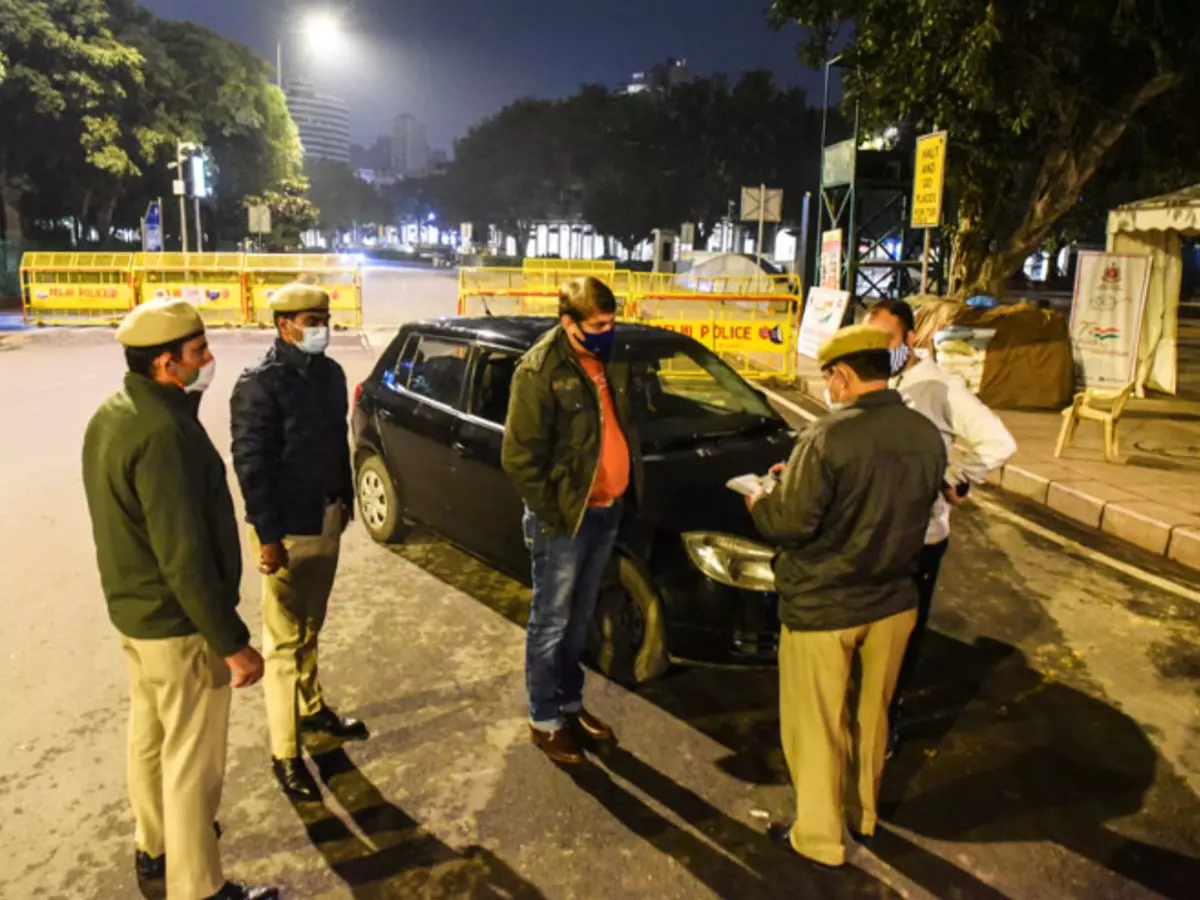Explained: What Is Yellow Alert And What Restrictions It Includes
28 December saw 496 new cases and one fatality in Delhi, representing a 50% increase. The rate of positivity has risen to 0.89 percent, the highest level since May 31.

28 December saw 496 new Covid cases and one fatality in Delhi, representing a 50% increase. The rate of positivity has risen to 0.89 per cent, the highest level since May 31. This time, the average daily rise of Covid is over 21% quicker than it was during the second wave in March-April. With the highest single-day rise after June 6 this year, Yellow Alert as per the Graded Response Action Plan (GRAP) was announced on Tuesday.
Delhi's positivity rate has been over 0.5 per cent since Sunday, prompting Chief Minister Arvind Kejriwal to issue a "yellow alert" on Tuesday. As per Graded Response Action Plan (GRAP), When the city's positive rate exceeds 0.5 percent for two days in a row, cases exceed 1,500 in a week, or the average occupancy of oxygen beds in hospitals persists at 500 for a week, a yellow alert is issued.
 BCCL
BCCL
Why Delhi announced Yellow Alert
While announcing the Yellow Alert Chief Minister Arvind Kejriwal said: "We are disheartened when we see crowding at markets and malls. We will have to shut down markets if this continues. None of us wants that. If you won't take care of yourselves, who will? We don't want you to fall ill¡ These restrictions are being imposed for you. I know you all are tired of restrictions, but it is important and there is nothing we can do about it".
According to the Yellow Alert, shops selling non-essential goods and services in markets and malls will be allowed to open on an odd-even basis between 10 a.m. and 8 p.m. Essential-items stores will be open 24 hours a day, seven days a week. Between the hours of 10 p.m. and 5 a.m there will be a night curfew.
 BCCL
BCCL
What are the restrictions?
The Delhi Metro and buses would be allowed to run at half-capacity. While government offices in Delhi will be able to call all Grade I officers, private businesses will be able to call 50% of their employees between 9am and 5pm. Social, religious, political, and festival-related gatherings will all be prohibited. Sports complexes, stadiums, and entertainment parks will be closed except for national/international sporting events.
Restaurants will be 50% operational between the hours of 8am and 10pm and bars will be 50% functioning between noon and 10pm Schools, educational institutions, cinema halls, banquet halls, auditoriums, spas, gyms, and entertainment parks, on the other hand, will be closed. Further, Weddings and funerals will be limited to 20 persons.
Public parks, gardens, construction activities and industrial establishments, e-commerce, barber shops, saloons, beauty parlours shall be fully open under yellow alert. News media, banks and telecom services, will also be exempted from this curb.
 BCCL
BCCL
Graded Response Action Plan is a colour-coded action plan under which the amount of restrictions in markets, industries, workplaces, and public transportation will be established based on the Covid-19 test positivity rate, new cases, and the occupancy of oxygen beds in hospitals.
GRAP will have four sorts of alerts: Level-1 (yellow), Level-2 (amber), Level-3 (orange), and Level-4 (red) (Red). The four alert levels are based on the severity of the covid situation, taking into account parameters such as positivity rate, cumulative new positive cases, and average weekly oxygen bed occupancy rate.
If the situation worsens even after Yellow Alert and test positivity rate remains over 1% for two days in a row, or 3,500 new cases in a week, or the average oxygen bed occupancy is over 700 for a week, the city will enter the following phase of restrictions, i.e Amber Phase.
 BCCL
BCCL
In this phase, Restaurants and bars will close, with the exception of the restrictions stated in yellow, however home delivery and takeaway will be authorised. Markets and shopping malls will be open from 10 a.m. to 6 p.m. Barber shops, salons, and beauty parlours will close, as will public parks and gardens. Metro will be allowed to operate at 33% full, while buses would be limited to 50% capacity. Each wedding and funeral-related gathering shall be limited to 20 people. In addition to the nighttime curfew, a weekend curfew will be implemented, restricting public movement from 10 p.m. Friday to 5 a.m. Monday. Construction and manufacturing units will be able to operate freely under Amber. E-commerce will be unrestricted as well.
What is orange alert?
Level 3 or Orange Alert will be implemented if there is a positive rate of more than 2% for two days in a row, or if there are 9000 infection cases in a week, or if patients are admitted to 1000 oxygen beds in a week. During the Orange level, only essential services, stand-alone shops, and construction activities with on-site labourers will be permitted. The (highest) Level 4 Red Alert will apply if there is a positive rate of more than 5% for two days in a row, or if there are more than 16000 new infection cases in a week, or if patients are admitted to 3000 oxygen beds. While the greatest level of warning in terms of severity is Red, the issuing of an Orange alert will bring most economic operations to a standstill. When the situation warrants it, additional limitations will be implemented under the Red Alert.
In the last week, Delhi has seen an increase in Covid-19 instances. After Maharashtra, the city has the second-highest number of Omicron cases at 165. According to the health department, Delhi's caseload has risen to 14,43,352, with 1,103 current cases. With memories of the first and second wave still fresh one hopes that things don't go further than the yellow alert.
